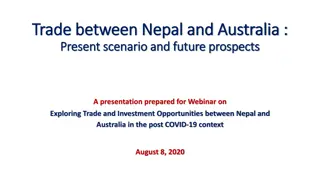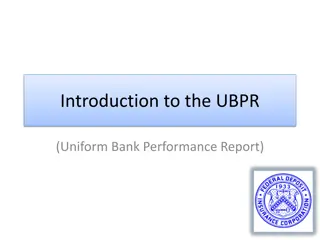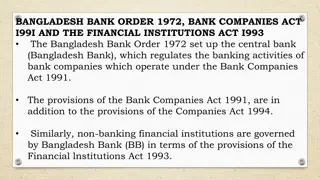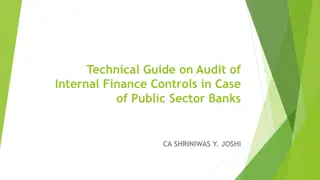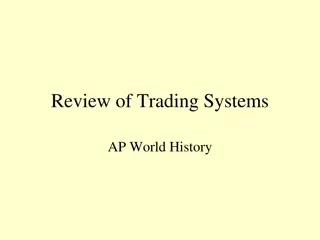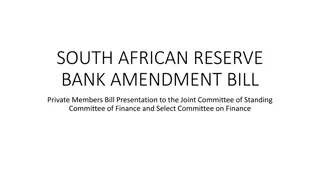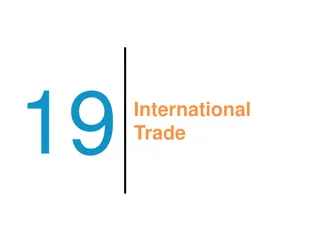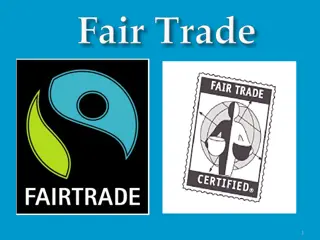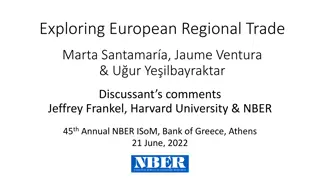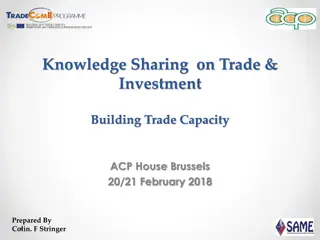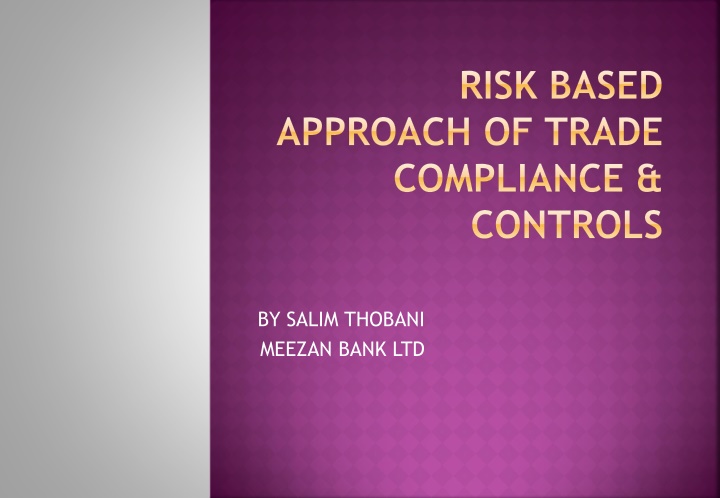
Risk-Based Approach of Trade Compliance & Controls at Meezan Bank Ltd.
The workshop on Anti Money Laundering, covering topics like Money Laundering, AML triggers, Red Flags, and more. Understand the concept of Money Laundering, its common elements, and terrorist financing methods.
Download Presentation

Please find below an Image/Link to download the presentation.
The content on the website is provided AS IS for your information and personal use only. It may not be sold, licensed, or shared on other websites without obtaining consent from the author. If you encounter any issues during the download, it is possible that the publisher has removed the file from their server.
You are allowed to download the files provided on this website for personal or commercial use, subject to the condition that they are used lawfully. All files are the property of their respective owners.
The content on the website is provided AS IS for your information and personal use only. It may not be sold, licensed, or shared on other websites without obtaining consent from the author.
E N D
Presentation Transcript
RISK BASED APPROACH OF TRADE COMPLIANCE & CONTROLS BY SALIM THOBANI MEEZAN BANK LTD
WORKSHOP FLOW Introduction and Objectives Of the Workshop Process Of Anti Money Laundering Practical Implementation of AML-Trade in Trade Products AML Triggers and Red Flags Case Studies Question Answer Session
BACKGROUND OF THIS WORKSHOP At the end of the workshop you will be able to understand the concept of; Money Laundering and Anti-Money Laundering Difference Customer Due Diligence (CDD) Local Regulations to counter Money Laundering. Red Flags and their implementations. Trade products that are being covered Detail of Red Flags Filing Suspicious Activity Reports (SAR) or Suspicious Transaction Report (STR) as per AML Act 2010. 1. 2. 3. 4. 5. 6. 7.
WHAT IS MONEY LAUNDERING? Money Laundering is the process by which criminals attempt to hide and disguise the true origin and ownership of the proceeds of their criminal activities. The term 'Money Laundering' is also is used in relation to the financing of terrorist activity (where funds may, or may not, originate from crime). The word laundering is used for cleaning dirty clothes, money laundering is used to clean the dirty money
COMMON ELEMENTS OF MONEY LAUNDERING Placement: Initial Injection of Dirty Money or property/asset in the financial system. Layering: The rotation of dirty money or property/asset in the financial system by creating long trail of transactions to disguise the origin and beneficial owner. Integration: The merging of proceeds after going through the layering procedure back into the system for purchase of Assets in a way that they appear to be originated from the legitimate activities.
TERRORIST FINANCING The method used to fund terrorism from legal or illegal source which might be generated by: Use of charity, business , Non-Governmental Organizations (NGOs) as a front company. Collect a large sum of donations or payments from non-existent services. Wire funds to accounts in locations of conflict.
TERRORIST FINANCING Withdraw sums in cash for purchase of explosives and weapons. Use charity company accounts to pay expenses of operatives. Supply legitimate finances with profits from criminal activities i.e Money Laundering. Invest un-used money in financial institutions until needed further.
RISK INVOLVED IN MONEYLAUNDERING Reputational Risk The potential that adverse publicity regarding a bank s business practices, whether accurate or not, will cause a loss of confidence in the integrity of the institution A major threat to banks as confidence of depositors, creditors and general market place has to be maintained.
RISK INVOLVED IN MONEYLAUNDERING Operational Risk The risk of direct or indirect loss resulting from inadequate or failed internal processes, people and systems or from external events. Weaknesses in implementation of banks programs, ineffective control procedures and failure to practice due diligence.
RISK INVOLVED IN MONEYLAUNDERING Concentration Risk Concentration risk is the potential for loss resulting from too much credit or loan exposure to one borrower. Lack of knowledge about a particular customer or who is behind the customer, or what the customer s relationship is to other borrowers, can place a bank at risk in this regard.
RISK INVOLVED IN MONEYLAUNDERING Legal Risk Legal risk is the potential for lawsuits, adverse judgments, unenforceable contracts, fines and penalties generating losses, increased expenses for an institution, or even closure of such an institution.
CUSTOMER DUE DILIGENCE (CDD) Customer Due Diligence (CDD) is a set of policies and procedures aim to: Identify the client and verify their identity To identify the beneficial owner and where relevant verify their identity. To obtain information on the purpose and intended nature of business relationship. 1. 2. 3.
CUSTOMER DUE DILIGENCE (CDD) CDD Measures to be taken Identifying the customer and verifying that customer s identity using reliable,independent source documents, data or information. Identifying the beneficial owner, and taking reasonable measures to verify the identity of the beneficial owner, such that the financial institution is satisfied that it knows who the beneficial owner is. For legal persons and arrangements this should include financial institutions understanding the ownership and control structure of the customer.
CUSTOMER DUE DILIGENCE (CDD) Understanding and, as appropriate, obtaining information on the purpose and intended nature of the business relationship. Conducting ongoing due diligence on the business relationship and scrutiny of transactions undertaken throughout the course of that relationship to ensure that the transactions being conducted are consistent with the institution s knowledge of the customer, their business and risk profile, including, where necessary, the source of funds.
CATEGORIES OF CDD Standard Due Diligence (SDD): SDD requires lower levels of CDD, monitoring and approval Enhanced Due Diligence (EDD): EDD requires more in-depth and frequent scrutiny and review of customer.
RECORD KEEPING Financial institutions should be required to maintain sufficient record for at least five years, all necessary records on transactions, both domestic and international, to enable them to comply swiftly with information requests from the competent authorities.
REGULATION OF CDD/AML IN PAKISTAN AML/CFT Guidelines On Risk Based Approach For Banks/DFI s Issued by State Bank of Pakistan AML Act 2010 issued by Government Of Pakistan to counter Money Laundering and Terrorist Funding. AML Act to be revised in 2016. TBML Draft Policy 2019.
ANTI MONEY LAUNDERING A set of procedures, laws or regulations designed to stop the practice of generating income through illegal actions. Anti Money Laundering processes and controls helps banks and financial institutions protect themselves and their reputation from the criminals
KEY ELEMENTS OF ANTI-MONEY LAUNDERING The AML Program plays a key role in combating crime by acting as a gatekeeper, preventing criminal gains from being placed within the financial system: A minimum, mandatory, standards for AML and CTF are set, based on the requirements of the UK Financial Services Authority (FSA) and industry guidance such as the Joint Money Laundering Steering Group (JMLSG). A risk based due diligence is performed on all new customers, including verification of their identity and, where appropriate, an assessment of the source of their wealth and funds. Sophisticated software systems are used to monitor transactions for suspicious behavior associated with AML and CTF.
KEY ELEMENTS OF ANTI-MONEY LAUNDERING Ensure compliance with all suspicious activity reporting required by the regulators and law enforcement agencies in our markets. Ensure robust training programs for all staff concerned in handling investigations. The Trade Finance e-learning program aims to give, particularly Trade Finance staff, a detailed understanding of money laundering techniques in trade finance and equips staff with the knowledge to spot money laundering risks.
INTERNATIONAL LAWS ANDREGULATIONS ON AML U.S. Patriot Act. FATF Regulations. Woflberg s Standards on AML
OFFENCE AND PENALTIES A person shall be guilty of offence of money laundering, if the person: (a) acquires, converts. possesses, uses or transfers property, knowing or having reason to believe that such property is proceeds of crime; (b) conceals or disguises the true nature, original location, disposition, movement or ownership of property, knowing or having reason to believe ,that such property is proceeds of crime. (c) holds. or possesses on behalf of any other person any property knowing or having reason to believe. that such property is proceeds of crime
OFFENCE AND PENALTIES Punishment for Money Laundering: 1- 10 years Imprisonment Fine up to PKR. Two Million Rupees
OFFENCE AND PENALTIES Criminal charges punishable by imprisonment Fines Administrative penalties Reputational and regulatory damage Loss of banking license
SANCTION RISK A large global financial institution faces a myriad of sanctions risks that vary from one jurisdictions and line of business to another . The risks also evolve as individual and entities subject to sanctions seek to evade control and new regulations are put in place to counter their efforts.
SANCTION RISKS The following countries are sanction from different organizations like US, EU & UN. Iran. North Korea Syria Sudan Cuba Myanmar Russia (Sect oral Sanction on Ukraine) * Myanmar & Sudan are not sanctioned but not suitable * India and Israel are prohibited
HIGH RISK COUNTRIES FATF identifies jurisdictions with weak measures to combat money laundering and terrorist financing (AML/CFT) in to FATC public documents that are issued three times a year. The FATF s process to publicly list countries with weak AML/CFT regimes has proved effective. The following are the High Risk Countries identified by FATF which reuqired additional screening:-
HIGH RISK COUNTRIES Bahamas Botswana Cambodia Democratic People s Republic of Korea(DPRK) Ethiopia Ghana Pakistan Iran Panama Srilanka Syria Trinidad and Tobago Tunisia Yemen
RED FLAGS IN TBML UNDER INVOICING PAYMENT - $1m $1million EXPORTER PERFUME 1,000,000 bottles actually worth $2 each = $2m IMPORTER COUNTRY A COUNTRY B $1million INVOICE 1,000,000 bottles at $1 each = $1m SHIPMENT CORRECT: INVOICE VALUE MIS-STATED
RED FLAGS IN TBML Over-Invoicing: PAYMENT - $3m IMPORTER PERFUME 1,000,000 bottles actually worth $2 each = $2m EXPORTER COUNTRY D COUNTRY C INVOICE 1,000,000 bottles at $3 each = $3m SHIPMENT CORRECT: INVOICE VALUE MIS-STATED
RED FLAGS IN TBML Over-Shipment/ Over Supply of Goods and Services: PAYMENT - $2m IMPORTER EXPORTER PERFUME 1,500,000 bottles worth $2 each = $3m COUNTRY A COUNTRY B INVOICE 1,000,000 bottles at $2 each = $2m INVOICE VALUE CORRECT: SHIPMENT AMOUNT MIS-STATED
RED FLAGS IN TBML Under-Shipment / Under Supply of Goods and Services: PAYMENT - $3m PERFUME 1,000,000 bottles worth $2 each = $2m EXPORTER IMPORTER INVOICE 1,500,000 bottles at $2 each = $2m COUNTRY A COUNTRY B INVOICE VALUE CORRECT: SHIPMENT AMOUNT MIS-STATED
RED FLAGS IN TBML Falsifying Descriptions / Goods described as of Low Quality: PAYMENT - $2m SHIPMENT 1,000,000 bottles of Chanel No.5 worth $3 each = $3m IMPORTER EXPORTER COUNTRY B COUNTRY A INVOICE 1,000,000 bottles of standard perfume at $2 each = $2m BOTH SHIPMENT AND INVOICE VALUE MIS-STATED
RED FLAGS IN TBML Goods described as of Better Quality: PAYMENT - $2m SHIPMENT 1,000,000 bottles of Standard Perfume worth $2 each = $2m IMPORTER EXPORTER COUNTRY B COUNTRY A INVOICE 1,000,000 bottles of standard perfume at $3 each = $3m BOTH SHIPMENT AND INVOICE VALUE MIS-STATED
RED FLAGS IN TBML TRANSACTION DOES NOT MAKE ECONOMIC SENSE:- Sometime trade transaction does not make economic sense and it need to trigger at the time of processing of transaction. Examples:- Oil import by Saudi Arabia from any other country. A car retailer exports or import wheat from/to any country. Mango export from Pakistan in the month of Nov/Dec.
RED FLAGS IN TBML PHANTOM SHIPMENTS:- By word phantom means fake, it means that there is no actual shipment made against the goods traded and only the shipping document presented for payments in trade transaction whether import or export.
RED FLAGS IN TBML SHELL COMPANIES Shell companies are those companies that are only exists only on paper and has no office and no employee, but may have a bank account or may hold passive investment or be the registered owner of assets.
RED FLAGS IN TBML EXPORT ADVANCE PAYMENT. Exporter are allowed to make shipment against the export advance payment within 1 year from the date of realization of export advance payment. Recently, it has been observed that billion of dollar remained unshipped agianst export advance payment and creat a doubt for money laundering element .
RED FLAGS IN TBML Third Party Payment A transaction where persons other than the principles are involved. Often , a third party transaction involve the buyer, the seller and another party who is not affiliated with the two.
SUSPICIOUS ACTIVITY REPORTS (SAR) Suspicious Activity Report or SAR (formerly Suspicious Transaction Report or STR) is a medium to report suspicious activities in one's operational unit. SAR s are the documented evidences of the alerts generated during investigation.
SUSPICIOUS ACTIVITY REPORT (SAR) A SAR should be filed with local regulator by the Compliance if a transaction is suspicious as defined by local regulation. For this purpose Trade Dept must report any suspicious transaction to Compliance Dept by internal SAR in accordance with the Group and local procedures concerning SAR reporting.
CASE STUDY 1:- PAYMENT MADE TO IRRELEVANT PARTIES IN THE TRANSACTION Importer name Mr.X Exporter name Mr. Y Claiming amount USD 100,000 Export payment received Mr. Z (Relevant party of Mr .Y) Scenario: Shipment made to Dubai from Karachi and simultaneously document have been forwarded to MBL , DUBAI for collection payment. Payment received from irrelevant party in the transaction.
DETECTION:- Red Flags: Involvement of 3rd party:- Mr. Z is not the party in the transaction however, it was part of the Relevant parties involved in the transaction .
INVESTIGATION:- Check the line of business b/w importer , exporter and 3rd party. Check the revelevncy of relevant parties involvement in the transaction . Check the connection/relation b/w 3rd party and the exporter or importer. .
DECISION:- Based on the investigation , found if relevant parties involved are remitted the own money of the exporter from different countries Based on the investigation , found no relationship b/w importer /exporter and remitter Escalate or Decline.
CASE STUDY 2:- PHANTOM SHIPMENT Shipment From Location A Karachi, Pakistan Shipment To Location B Dubai Claiming amount USD 100,000 Shipping Line XYZ , Co Scenario: Import shipment from Location B to Location A. Airway bill showing no flights dates or Flight Number.
DETECTION:- Red Flags: Airway Bill not showing the required information have concern over shipment. Shipment is not clear.
INVESTIGATION:- Check the information from the companies websites to verified the shipments Else call the IMB report in order to ensure the movement of goods Check with customer for clarification .
DECISION:- If the IMB report found negative, escalate or decline If the IMB report found positive, go head with the approval . If the information available on the websites , go head with the approval or else otherwise.
CASE STUDY 3:- TRANSACTION DOES NOT MAKE ECONOMIC SENSE Value of shipment USD 1,000,000/- Country of Export Nepal Country of Import Nigeria Commodity Rice Applicant Co. ABC , Kathmandu Nepal Beneficiary Co. XYZ , Nigeria Scenario: Shipment amounting USD 1 Million was made to Nigeria from Nepal for export of Rice during the massive earthquake hits Nepal in April 2015.






